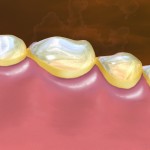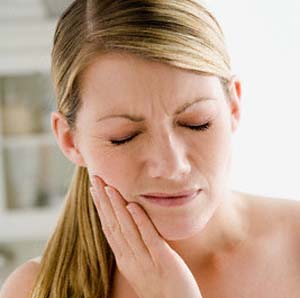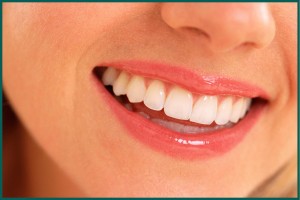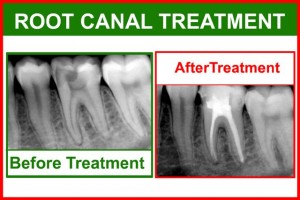To get kids to brush a full two minutes cycle of their teeth is a challenging task. To select the best kid toothbrush for them is not easy either. There are so many revolutionary toothbrushes for kids in the market that encourage them to brush nowadays. Finding a toothbrush that the kids would use is the key to good dental health. Continue reading
Yearly Archives: 2010
How to Stop Toothache during Pregnancy
Be A Toothache Free Mum To Be
It is a blessing to be expecting a child. Being a mum to be has to change her lifestyle and be cautious to avoid any problem that may affect the pregnancy. Unfortunately toothache seems to be a common problem among pregnant woman. Here are some tips to help you prevent and curb the problem.
Why does mum to be has toothache?
Poor dental health
It is important that you do a routine dental check up prior to your pregnancy. It is not too late to do one if you have gotten pregnant currently. Existing dental decays and gum problems always get worse because during your first trimester you tend to vomit while brushing your teeth. Because of that, some pregnant ladies tend to brush less or do not brush at all. Continue reading
How to Use Tea Tree Oil for Dental Health
If you clean your teeth properly and follow nutritional eating habits, you should have healthy gums and strong teeth into your elder years. There are many ways to keep your mouth healthy and one natural remedy is using tea tree oil.
Tea tree oil, also called melaleuca oil, is taken from the leaves of Melaleuca alternifolia, a plant native to Australia. It is a well-known natural disinfectant and has been used for years in the medical and dental professions as an effective antiseptic that is active against many bacteria, virus and fungi, including some that are resistant to antibiotics. However, it is not as effective as oral antibiotics in some conditions. Continue reading
How to Decide Between a Dental Bridge and a Post
Dentistry is a very subjective area where a wide range of treatment such as dental bridge or a post is readily available to suit your needs. This can present challenges for both the dental practitioner and the patient in deciding which treatment option suits the patient best, taking into account the advantages, disadvantages, time and cost required to achieve desired results. As the dental practitioner may have very different opinion as to what is ideal, you being the patient need to clearly express your needs to the dentist and have a good discussion to avoid any misunderstandings and setting down reasonable and realistic expectations.
Why does a tooth needs a dental bridge or a post?
Often when a tooth is very broken down, there are several options to manage such tooth. Not pursuing with treatment is always an option, though always not recommended especially when associated with large areas of dental decay and the potential of infection. Another option is to place pins or post into the tooth. The former consist of small screws that are manually drilled onto the tooth while the later is an alloy post that is cemented into the root canal, hence the tooth will need to have been nerve or root canal treated prior to post insertion. Placement of pins or post will provide more retention and anchorage for the dental restoration. The last option is to extract the tooth. After extraction, a gap will be present and this can be replaced if desired. There are several options to replace a missing tooth, such as bridge, dentures or dental implants. Continue reading
How to Prevent and Avoid a Root Canal Treatment
Root canal treatment is a dental procedure commonly used to treat infected or necrotic teeth. It offers an alternative to having the troubled tooth extracted, provided that the root canal system is accessible with reasonable negotiation as close as practicable to the end of the root. The tooth also needs to have an adequate amount of remaining tooth structure and good surrounding bone support.
Why do teeth need root canal treatment?
Teeth requires root canal when the pulp of the tooth has been pathologically involved through decay or periodontal infection such that the pulp is progressively dying or already dead. The pulp in this context refers to the nerve and blood vessel supply of the teeth, which provides sensation and nutrients to the teeth. When bacteria invades the root canal system, it slowly colonize the area to eventually infiltrate the whole canal and causing death of the pulp. Bacteria can still grow on dead pulpal tissue, allowing precipitation of more toxins and causing an infection, which can spread outside to the underlying jawbone and supporting tissues. Despite the nerve being dead, the surrounding tissues still possess neural innervation and this contribute to the pain perception when infection associated with a necrotic nerve is involved. Continue reading
Abscess tooth, How Does a Dentist Drain it ?
 So what is an abscess tooth
So what is an abscess tooth
An abscess tooth is actually termed an odontogenic (tooth) Â infection. A abscess tooth usually starts as a result of a decayed tooth, the decay which contains bacteria slowly eats away at the tooth and breaks down its structure. Soon enough the bacteria will progress deep enough into the nerves and blood vessels of the tooth termed the pulp of the tooth. Once inside it will start to spread like how a normal infection spreads when a gaping open wound is left untreated. The infection will slowly tract inside the pulp chamber of the tooth and cause the pulp of the tooth to die and become abscessed. This abscess tooth or pus will eventually tract and spread to infect the jaw bone. Clinically an abscess is a thick walled cavity pus. It is well localized or confined in the thick wall of the jaw bone or gum tissue.
How to make a Herbal Gargle to Cure Gingivitis
Gingivitis, which means inflammation of the gums, is perhaps the most common human disease. Usually related to bacterial biofilm on the tooth surface, gingivitis of plaque origin is a preventable and curable periodontal disease.
Gingivitis treatment can be by mechanical removal of the source of irritation to the gums (for example scaling and toothbrushing) or by chemotherapeutic means (for example mouthwash). Mouthwashes like over-the-counter products with essential oils, such as Listerine, or dentist prescribed chlorhexidine mouthrinses may help in keeping our mouths clean but some may prefer a natural cure for gingivitis. Continue reading
How to Take the Best Care of Your Child’s Teeth
A child’s teeth start to develop before birth. Therefore, it is necessary to start caring for your child’s teeth and gums at an early age. The most important is to bring your child to the dentist when his first tooth erupts into the oral cavity, usually around 6 months of age. The dentist will be able to detect any problems associated with your child’s teeth before they become serious. Establishing a good rapport between the dentist and child is essential to ensure that the child feels safe and able to cooperate during dental treatment. Diet, proper tooth brushing and oral hygiene goes hand-in-hand with your child’s care. Continue reading
Things Not to Drink with Braces
Beverages to be avoided when having braces on!!
Orthodontic treatment is common in both children and adults. They type of treatment and appliance advocated may vary from patient to patient, but majority of them treated wear fixed appliances for a certain period of time. Therefore, it is necessary to make some diet modifications to protect the braces as well as to ensure the health of the tissues in the mouth. It is wise to avoid or eliminate a list of beverages for this very reason. Continue reading
Top 5 Early Signs of Gingivitis

Picture 1: healthy gingiva which is pink, firm, and have knife edges at the neck of the teeth, with mild plaque accumulation
Gingivitis is more commonly known as the inflammation of the gums. The gums are also clinically known as gingiva, hence the term gingivitis. Generally, healthy gums are pink in colour, firm, and do not bleed while brushing. However, it is almost impossible to maintain perfectly healthy gums as gingivitis it is caused by plaque (a thin biofilm of bacteria) that is adhering to our teeth. Plaque can be removed through brushing, but, they are formed again once the brushing stops.  Usually, there is no need to worry about our gum’s health as long as a good brushing regimen is maintained (which is twice daily), however, it does have the potential to evolve into something more destructive, which is known as periodontitis. Continue reading





